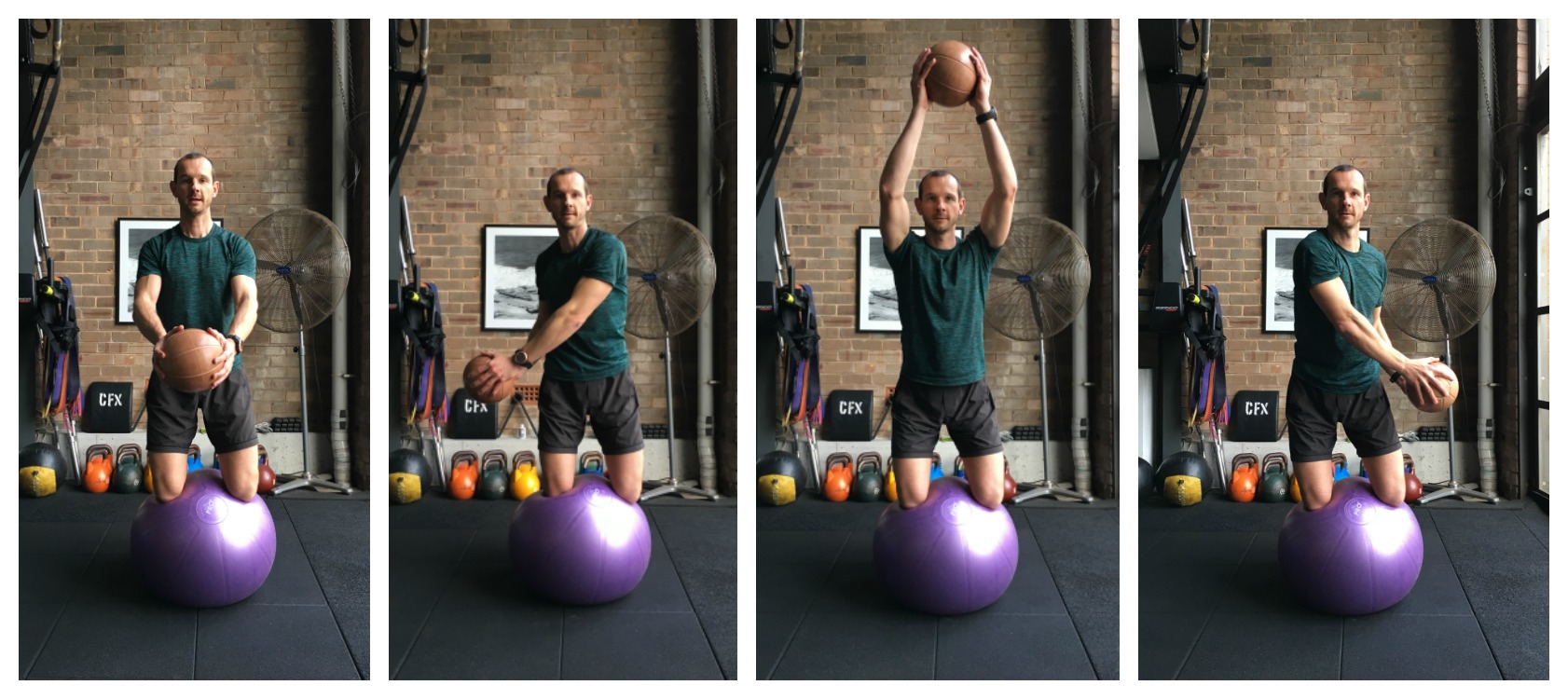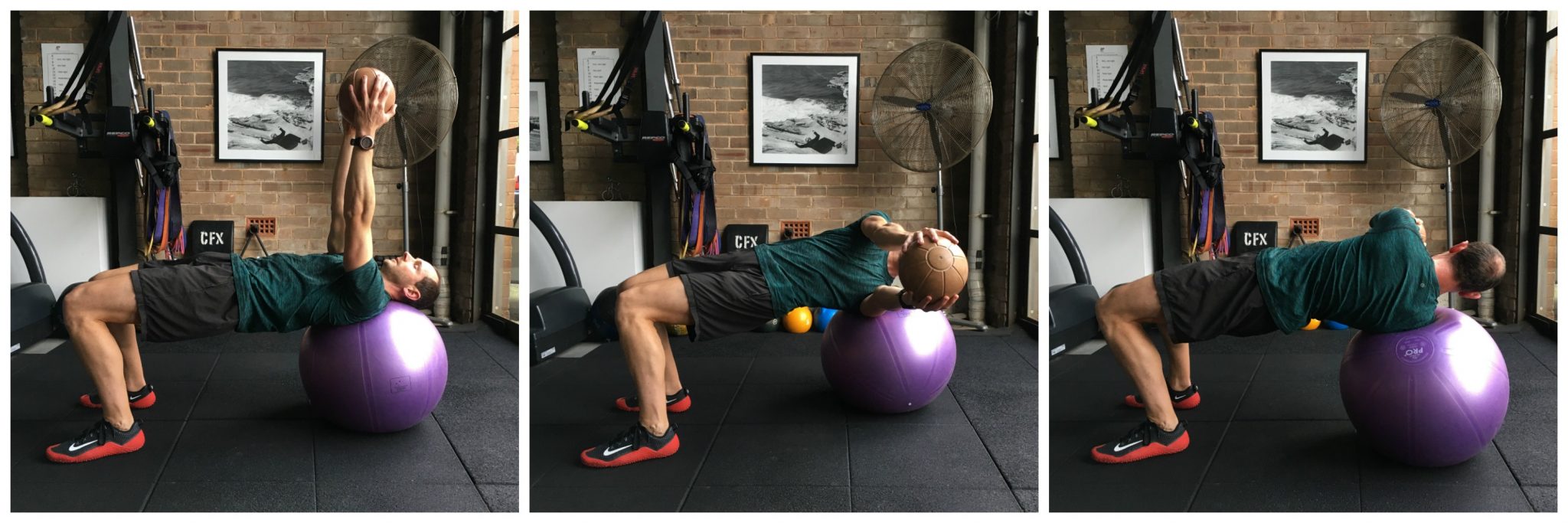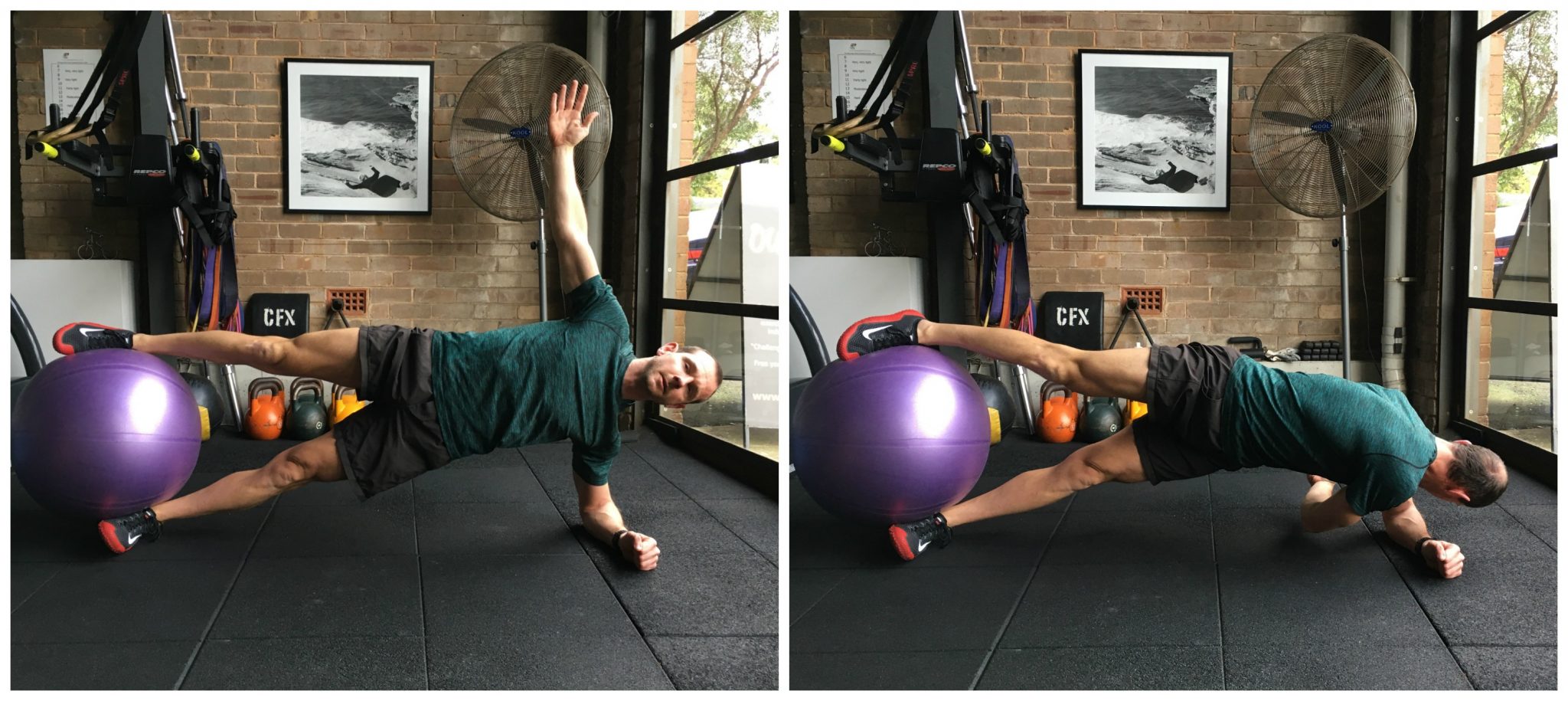Have Swiss ball, will travel. Snowsbest resident fit2ski guru, Guillaume Tual, reveals his next five exercises in his latest series.
Swiss Balls have been around for a very long time and are still a very versatile piece of equipment. Some see it only as a tool to work the core muscles a bit like Jane Fonda did a few decades ago. But I can tell you that every athlete skier and snowboarder include it in their training, whether it’s to gain better balance or to prepare the legs for the small movements created when riding down the mountain.
The next series of 5 Swiss Ball exercises is designed to create lines of tension from your legs to your arms and controlled through your mid section (or core muscles group if you prefer). When you ski or snowboard, both upper body and lower body are working together, and often in opposite ways, to keep you up and fighting the G-Force. Think of arms pointing forward as your drive your hips back or shoulders facing downhill while your legs are pointing to the side as you turn. Your trunk has to remain stable and stong enough to transfer forces up and down your body.
As usual, make sure you warm up properly and accordingly to the program you are about to do. no point of running on the treadmill if you are going to do an upper body workout. Always include some Dynamic Stretches mixed with a cardio element like the drills below:
Perform 10 repetitions of the following exercises:
- Bodyweight squats (knee depth)
- Forward-Reverse Lunge (maintain upright torso)
- Clock Hops (half a meter hops front-centre-right-center-back-center-left-center)
- Curtsy Lunge with trunk rotation (towards back leg)
- Downward Dog to Front Step (replace right hand with right foot and repeat)
Swiss Ball Kneeling Triangle (with Medicine Ball)
How: Make your way to a kneeling position on a Swiss Ball. Get a weight (dumbbell, med ball, plate…) and find your balance point. Try to keep your arms straight then move them to your right side, rotating your torso. Stretch your arms overhead then bring them down to your left side, so the whole arms movement looks like a triangle. Reverse the movement a dozen times as you try to reach further on each side.
Tips: The further the weight away from your torso, the harder it is so start with your arms bent for more stability. Focus on a fixed point in front of you. As you get better, you can look anywhere. Squeeze your buttocks and feel the ball under your shins, this will help you keeping steady.
Regress/Progress: If kneeling on the ball is too hard, you can sit on it and lift one foot off the floor then eventually both feet. Keeping the weight close to your body is also easier. If you’re feeling comfortable, use a cable machine instead of a weight. The pulling tension will increase core muscles engagement.

Swiss Ball Russian Twist
How: Sit on the ball and roll forward until your shoulders, neck and head are supported. Place your feet a bit wider than hips-width apart and squeeze your butt to create a straight line from knees to head. With the Medicine Ball in your hands over the chest, rotate your torso to the left until your shoulders are directly perpendicular to the floor (the only contact point with the ball should be your left shoulder). Return to the starting point and repeat to the right side. Make sure you keep your glutes engaged throughout the whole movement by pushing your heels into the floor.
Tips: Breathe in and out into your belly and go slowly. Most of the movement is initiated by your Oblique muscles (between your rib cage and hips). This is a fantastic rotation exercise that will help you stay strong on the slopes as your turn (both ski and snowboard)
Regress/Progress: Start with no weight (keep your palms together) to make it easier or cross your hands on your shoulders. Progress by using a cable machine instead of a dead weight as you will have to constantly fight the pulling force. No need to go heavy otherwise you’ll find ways to cheat.

Swiss Ball Shoulder Reach
How: Lay on your side with the Swiss Ball between your feet. With your left elbow directly under your shoulder, lift your hips into a side plank position. Stretch your right arm up then reach under your left arm pit as far as you can. Return to starting position.
Tips: Ensure you place your shoulder directly over your elbow to avoid any shoulder strain. This exercise is all about control and stability so don’t rush it and try to reach up then back as much as you can to increase the range of motion and more torso rotation.
Regress/Progress: If this is too hard, ditch the Swiss Ball and either do it with both feet or knees on the floor. To make it harder, place both feet in front of each other on the Swiss ball. You can also add a small weight or resistance band.

Swiss Ball Dead Bug
How: This is one of the best core engagement exercise you can do. Lay on your back and tilt your hips back so your lower back is close to be flat against the floor. This is the position you are meant to maintain throughout the entire sequence. Bring your knees over your hips and place the Swiss Ball against the knees and your straight arms. Breathe in/out into your belly and focus on keeping your lower flat (tuck your tail bone under). Slowly extend your right leg and your left arm simultaneously until they are one inch off the floor (do not rest on the floor). Return to starting position and swap leg and arm. Breathe throughout he entire movement.
Tips: Go as low as you can before you feel your lower back arching. You are trying to engage your abdominals to contract the effect of your hip flexors pulling your back. It defeats the purpose if your back arches.
Regress/Progress: You can start with one arm only, then one leg before you move contralateral limbs. Beware of progressing to fast without efficiency. The slower you do it, the more tension on your abdominals, which is harder

Swiss Ball Knee Tuck and Pike
How: Assume a push up starting position with your feet on the Swiss ball. You should be in a straight line from head to toes. Drive your arm pits away from the floor and tuck your tail bone under as you squeeze your buttocks. Drive your knees towards you chest and try to reach your arms. Extend your leg back to starting position. Now keeping your legs straight, drive your hips as high as you can pushing your hands into the floor. you should feel your are drawing the ball in with your abdominals. Return to starting position.
Tips: Spread your fingers and grasp the floor (this will engage more pectoral fibres) for more shoulder control. In the knee tuck, try to roll your hips to bring your knees to your chest (more abdominal work) instead of bringing them to the floor. Extra points if you can look at the ball doing the pike.
Regress/Progress: The knee tuck is a regression of the pike but combine both of them and you get a great abdominal combo. This is also a great upper body and back exercise as it helps stabilising the the trunk. If you are feeling amazing, bring one leg up during the pike (one leg on the ball and one leg into handstand position).

Note: You should consult your physician or other health care professional before engaging in any exercise program to ensure you are in good physical condition to perform the exercise programs and you understand there is a risk of physical injury.
For more Fit2Ski articles, read here.






